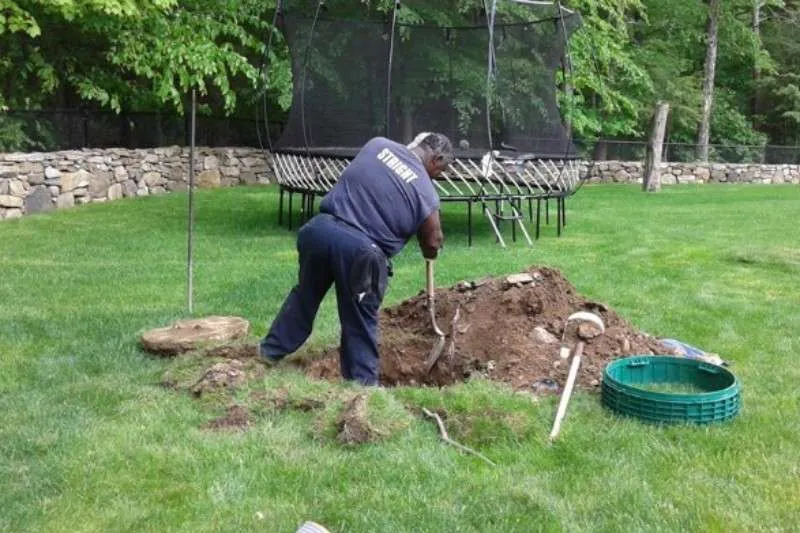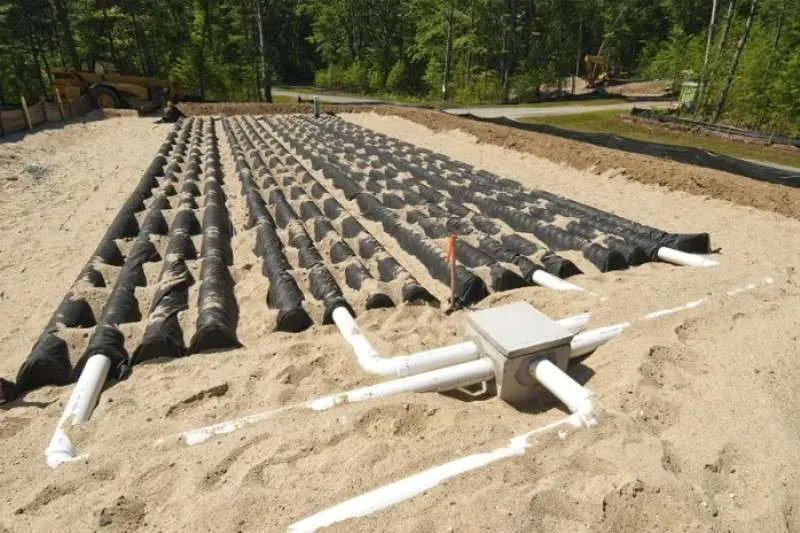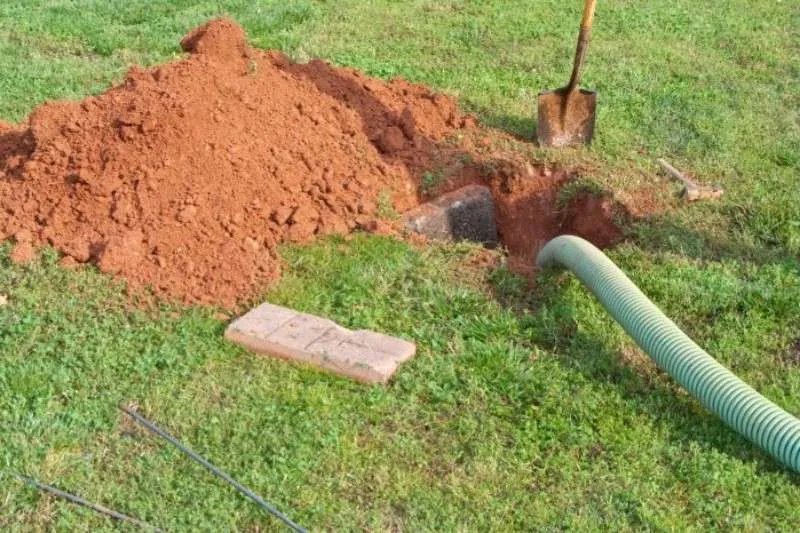Are you the proud owner of a home with a septic tank and drain field? If so, it’s important to understand how these systems work to ensure your home is properly maintained. When it comes time for maintenance, repairs, or installation of new equipment, knowing exactly where your septic tank and drain field are located can save you time and money.
In this blog post, we’ll share some useful tips on locating your septic tank and drain field so that you feel confident tackling any project related to their care. Read on for more helpful information.
Introduction to locating your septic tank and drain field
Knowing the location of your septic tank and drain field is an important part of maintaining a functioning septic system. These components are responsible for safely treating wastewater from your property and returning it to the environment, so they must remain in good working order. In this guide, we’ll outline how to locate your septic tank and drain field and provide information on the situations in which you may need to do so.
Having a clear understanding of the location of your septic tank and drain field is important, as it will help ensure that they are maintained properly. Knowing their locations can also help you identify potential problems before they become serious and costly to repair. Additionally, if you ever decide to sell your property, this knowledge will be necessary for prospective buyers.
Situations in which you may need to locate your septic tank and drain field
There are several situations in which you may need to locate your septic tank and drain field, including the following:
- Installation or repair of new equipment: If you’re installing a new appliance or repairing an existing one, you’ll need to know where your septic system components are. This information is essential for any plumbing work involving the septic system.
- Periodic maintenance: Your septic tank and drain field should be checked periodically for any issues. Knowing their location will help you identify potential problems before they become serious and costly to repair.
- Selling your property: This knowledge will be necessary for prospective buyers if you ever decide to sell your property.
Consulting property records and building plans
If you are unsure of the location of your septic tank and drain field, several methods can be used to locate these components. Consulting property records or building plans is one way to determine their location and size. Depending on municipal regulations, accessing open septic tanks and system records from local authorities or previous homeowners may also be possible. Additionally, reviewing building plans may provide clues as to the location and size of septic systems on a particular property.
Before attempting any excavation work, it is important to contact local authorities or utility companies to check for potential buried cables, pipes, or other utilities near or around where you plan to dig. If these components are present, it is recommended to use a professional who can safely dig and identify the septic system components.
Septic tanks should have access ports for routine maintenance and inspections, typically found close to the ground’s surface. The drain field will be located downhill from this point, as wastewater must be able to flow away from the tank. This can be further identified by looking for any areas of greener, moister vegetation compared to the surrounding area — this more green grass is often a sign that wastewater is being dispersed in these regions.
Finally, if all else fails, using metal detectors or ground penetrating radar can assist in pinpointing septic systems or electrical components located on a property.
Identifying physical clues on your property

Locating your septic tank and drain field can be done in simple steps. Before beginning, it’s best to know exactly where your home’s plumbing pipes are, as this can help you locate your septic tank and drain field more easily.
The first step is to identify physical clues on your property. These can include maintenance holes that access septic tanks or pipes from the house to the drain field. Look for depressions in the land, as they may provide clues to where a septic tank outlet pipe or drain field is located.
Recognizing signs of septic tank and drain field locations is also helpful. These can include lush vegetation in a certain area or wet spots around the property. If you see any of these signs, they may indicate a septic system in the yard or vicinity.
Finally, it would be best to observe the layout of plumbing pipes inside and outside your home. This can provide insight into where a septic tank, sewer line, and drain field would be located.
Using a septic tank probe
A septic tank probe is one of the most reliable methods for locating your lid and drain field. The probe, which resembles a long metal rod with a pointed end, is inserted directly into the ground to locate buried components such as tanks and pipes. When using a septic tank probe, it’s important to understand this method’s benefits and potential risks.
The primary benefit of using a septic tank probe is that it can provide an accurate map of your septic system. Since the probe is inserted directly into the ground surface, it can detect objects hidden beneath soil or sediment layers. This makes it a much more reliable method of locating your septic tank than relying on visual surveys alone.
Tips for safely and effectively probing your property
It’s important to use caution when probing your property as it may disrupt existing systems, potentially causing further damage and costly repairs. To ensure the safe and effective use of the probe, follow these tips:
- Protect yourself with protective gear such as safety goggles, long pants, and shoes.
- Start by probing small areas of your property at a time. This will help you locate the tank without doing too much digging or potentially damaging other components.
- Use caution when inserting the probe into the ground, and stop if you feel any resistance. It’s also important to avoid contacting buried electrical and gas lines.
- Have a professional inspect the area before starting your probe work. This will help ensure your safety and avoid unnecessary damage to existing components.
Enlisting the help of a septic system professional
If you need help locating your septic tank main sewer line and drain field, the best option is to enlist the assistance of a professional septic system service provider or expert. Hiring a professional to locate your septic tank and drain field can be beneficial in several ways:
1. A trained technician will have access to specialized equipment and resources needed to accurately pinpoint the location of your septic system components.
2. Professional assistance may reduce the time it takes to complete the task, saving you time and money.
3. A septic service provider can also provide advice and information on how best to care for and maintain your system and answer any other questions.
By enlisting the help of a professional septic system service provider to locate your septic tank and drain field, you can be sure that the job is done right the first time. With the right expertise, you’ll know your septic system is properly maintained. Contact your local health department for recommendations for a reputable septic tank maintenance service provider.
Documenting your septic system location

Once you have located your septic tank and drain field, documenting the exact location is important. You can do this in various ways, including making a sketch or diagram of your system, taking photographs of the site, or even creating an aerial map with GPS coordinates. This information will be invaluable if you ever need to repair the system.
Creating a detailed map of your septic system layout, including all components and related structures, such as leach lines or risers. A professional septic service provider can help you with this task if needed. This map will be useful for routine maintenance or emergency repairs.
Finally, sharing this information with future homeowners or service providers is important. This will ensure they can find and access your septic system quickly and easily in an emergency. You can include the septic tank’s location information and layout map in a deed to the property or provide it directly to new owners or service providers. Detailed septic system information makes it easier to take care of future maintenance or repairs.
FAQs
Why is it important to know the location of my septic tank and drain field?
It’s important to know the location of your septic tank and drain field to properly care for your septic system. Knowing where these components are located will also help you access them quickly if there is an emergency or need for repairs.
Can I find my septic system’s location in property records or building plans?
Property records or building plans may list your septic system’s location. This can be helpful if you can locate the document, but it is not always accurate because systems may have been changed over time.
What physical clues on my property can help me locate my septic tank and drain field?
Physical clues pointing to the location of your septic tank and drain field include a maintenance hole cover, an earthen mound or depression surrounding soil, pipes or risers sticking out of the ground, visible signs of vegetation in an otherwise similar landscape, or an unusually strong odor.
How do I use a septic tank probe to locate my septic system components?
A septic tank probe is a professional tool used to locate the position of your septic tank pipe and drain field. When inserted into the ground, it transmits an electromagnetic pulse that a receiver can detect. The receiver will then display the location of the septic system components on its screen or through audio cues.
When should I hire a professional to help me locate my septic tank and drain field?
It would be best if you considered hiring a professional when: you’re unable to locate the septic system components using physical clues; your septic records or building plans are outdated or unavailable; you need help sketching a map of your system layout, or you want expert advice and assistance locating your system.
Conclusion
As you can see, discovering the exact location of your septic tank and your septic drain field or field may seem like a daunting task at times, but with this helpful guide and your research, you can be sure that you’ll be able to complete any project related to the care and maintenance of your septic system. Always play it safe and call an appropriate contractor if you feel confused or overwhelmed. Taking the time to properly identify your septic tank and drain field will save you time, money, and energy in the long run for future projects involving these components.


